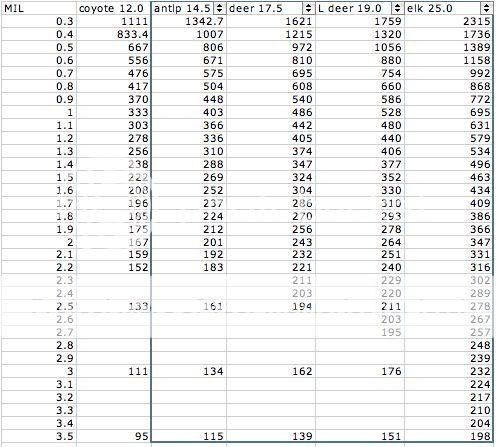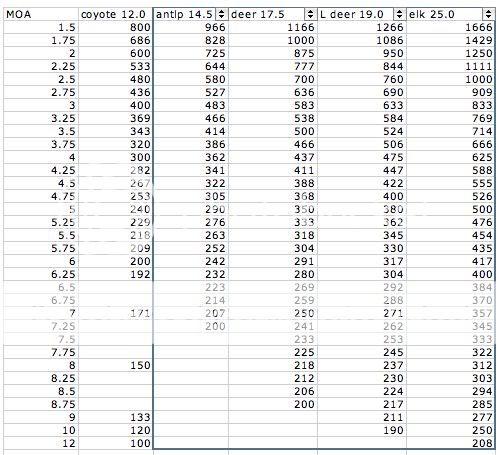I have used them, but mostly at 500 yards and under for white tail and mule deer. The difficulty is that a 2" difference in target size at 500 yards will result in a 50 yard error in range. An Alberta mule deer compared to the average in the lower 40 will produce that difference easily. Same when comparing Southern and Northern white tails. The main skill is to be able to judge the size of the animal. I found the top of the back to the bottom of the chest behind the foreleg works best if the game cooperates. Also, here is where high velocity does make a difference. I can have a 50 yard ranging error at 500 with my 270WSM at 3200 FPS and still be in the kill zone. I have to have accuracy within 25 yards at 500 for my 308 at 2700 FPS. When I get to a hunting area, the first thing I do is try to determine the chest size of the game in the area. I multiply that size times 27.8 and have the the range in yards for one mil. Example: 1 mil= 17" chest size x 27.8=473 yards. if the ranging gives me 1.5 mils, 315 is the distance. Once you have the 1 mil distance, it is easy to produce a simple range chart and tape it to the inside of your butler creek scope cover. All this being said, this is all a back- up if I can't get a reading off my Geovids.


